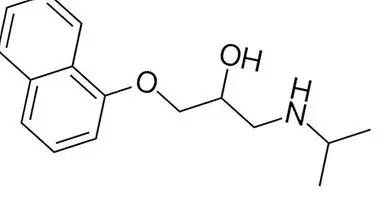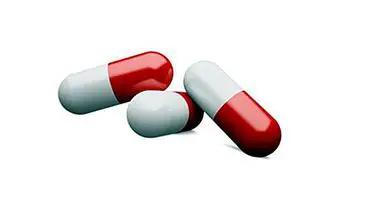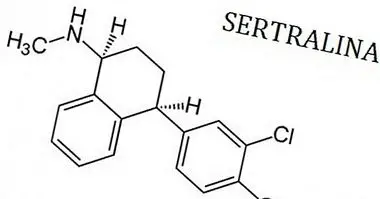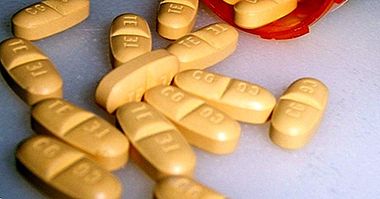Viloxazine: uses and side effects of this drug
The creation of new drugs to combat all kinds of diseases and disorders, both psychological and physical, is a dynamic process in which any medication can be withdrawn from the market almost as quickly as it was put into it. Either for economic reasons or in relation to the benefits of the company, as for security reasons.
This is the case of viloxazine, an antidepressant marketed over a little over twenty years and of which we will talk throughout this article. In the same way, we will analyze its uses and its form of administration, as well as its possible side effects and the precautions that should be taken by those who consumed it.
- Related article: "Psychotropic drugs: drugs that act on the brain"
What is viloxazine?
Viloxacin, commercially known under the names of Vivalan, Emovit, Vivarint and Vicilan, it was an antidepressant drug whose main asset was a morpholine derivative and that it was categorized within the group of selective norepinephrine reuptake inhibitors (ISRN).
This drug was discovered and launched on the market in the year 1976. During its marketing season, it was used as an antidepressant in a large number of European countries, and it has reached quite a fame due to its stimulant effects similar to those of amphetamines , but without the effects so addictive or without the signs of dependence of these.
Although she was never granted the approval of the American Food and Drug Administration (FDA), she was granted a designation for the treatment of narcolepsy and cataplexy. However, it was removed from markets around the world in 2002, citing commercial reasons.
Regarding its action as an antidepressant, it was observed that, in animal models, viloxazine inhibits the reuptake of norepinephrine in the hearts of rats and mice. As regards the inhibition of serotonin reuptake, this drug potentiated brain functions mediated by this neurotransmitter in the same way as other more potent antidepressants such as amitriptyline or imipramine; also showing no anticholinergic effect.
Finally, it was also discovered that, in rats, it regulated in a very effective way the gabaergic receptors of the frontal cortex of these animals.
- You may be interested: "Types of antidepressants: characteristics and effects"
In what cases was this antidepressant used?
Viloxazine was administered, in some European countries, as the drug of choice for the treatment of depression or major depression disorder. Depression or major depressive disorder is a mental or psychological condition characterized because the person suffering from it experiences a constant and acute feeling of negative emotions like sadness and anguish.
Often, depression is accompanied by low self-esteem, loss of interest in activities that are usually pleasant or attractive, decreased energy and pain without apparent cause.
While in milder cases, depression may appear intermittently, alternating periods of depression and periods of emotional stability. While in the most serious the person presents the symptoms permanently; including faulty beliefs or even visual or auditory hallucinations.
Major depressive disorder can interfere significantly and negatively in the day to day of the patient; modifying their routines, their eating habits, the sleep cycles and your general health status. The decline of the person can lead to be so serious that between 2 and 7% of people with depression come to resort to suicide as a way to eliminate the suffering suffered.
How was it administered?
Viloxazine was marketed in the form of tablets for oral administration. Usually, it recommended taking daily doses of between 50 and 100 milligrams , once every 8 or 12 hours and, if possible, accompanied by a meal. In addition, the last dose should be ingested, recommended, before 6 o'clock in the afternoon.
However, in the most severe cases, the dose could be increased up to 400 milligrams of viloxazine per day.
It is necessary to specify that, neither in this case nor in the case of any other medication, the patient must alter at his own expense the doses indicated by the medical professional, since these are adjusted to the needs or condition of the patient. Otherwise, there is a possibility that the patient will experience serious side effects such as abrupt changes in mood, among many other symptoms.
Due to the way viloxazine works, In most cases the pharmacological treatment started gradually , starting with lower doses which increase as the first weeks of treatment pass.
In addition, viloxazine should never be withdrawn abruptly, since the side effects of this interruption in the consumption of the medication could cause symptoms typical of the withdrawal syndrome such as severe headaches, increased muscle stiffness, mood disorders, dizziness or dizziness
What were the side effects?
As with the vast majority of psychiatric medication, viloxazine also had a series of side effects that, although not always important or serious, appeared quite frequently.
In most cases, the appearance of side effects was due to a dilation of the pharmacological action of the medication and they affected mainly the central and autonomous nervous system .
These adverse reactions could be divided into: frequent side effects appear between 10 and 25% of cases), occasional (between 1 and 9% of cases) and rare side effects (less than 1% of cases).
1. Frequent side effects
Sickness. Vomiting . Headache.
2. Occasional side effects
These are side effects of viloxacin that are somewhat rarer.
- Constipation .
- Dry mouth.
- Urinary withholdings
- Tachycardia .
- Disorders of accommodation.
3. Rare side effects
In these rare but serious cases, treatment with viloxazine should be stopped immediately and always under the supervision and supervision of a doctor.
- Cardiac arrhythmias.
- Orthostatic hypotension.
- Worsening anxiety .
- Agitation.
- Drowsiness or insomnia.
- Ataxia.
- Confusion.
- Tremors .
- Paresthesias
- Sweating
- Myalgia.
- Mild hypertension .
- Rashes.
- Convulsions
- Jaundice.
What precautions should be taken during its consumption?
Before the start of treatment, the patient had to inform his doctor of any special health condition in which it was found, especially if it included cardiovascular alterations, epilepsies, liver insufficiencies or renal insufficiencies.
In the same way, there are a number of medications that could interfere with the action of viloxazine. These included antiepileptic drugs, levodopa, theophylline or St. John's wort.
Although no adverse effects of consumption of viloxazine were found during pregnancy, it could be excreted in breast milk, so it was usual to recommend not administering this drug during the last weeks of pregnancy and during lactation.
Finally, like other antidepressant drugs, viloxazine Could cause states of drowsiness and confusion , so the driving of vehicles and the handling of heavy machinery during the treatment were not recommended.



















